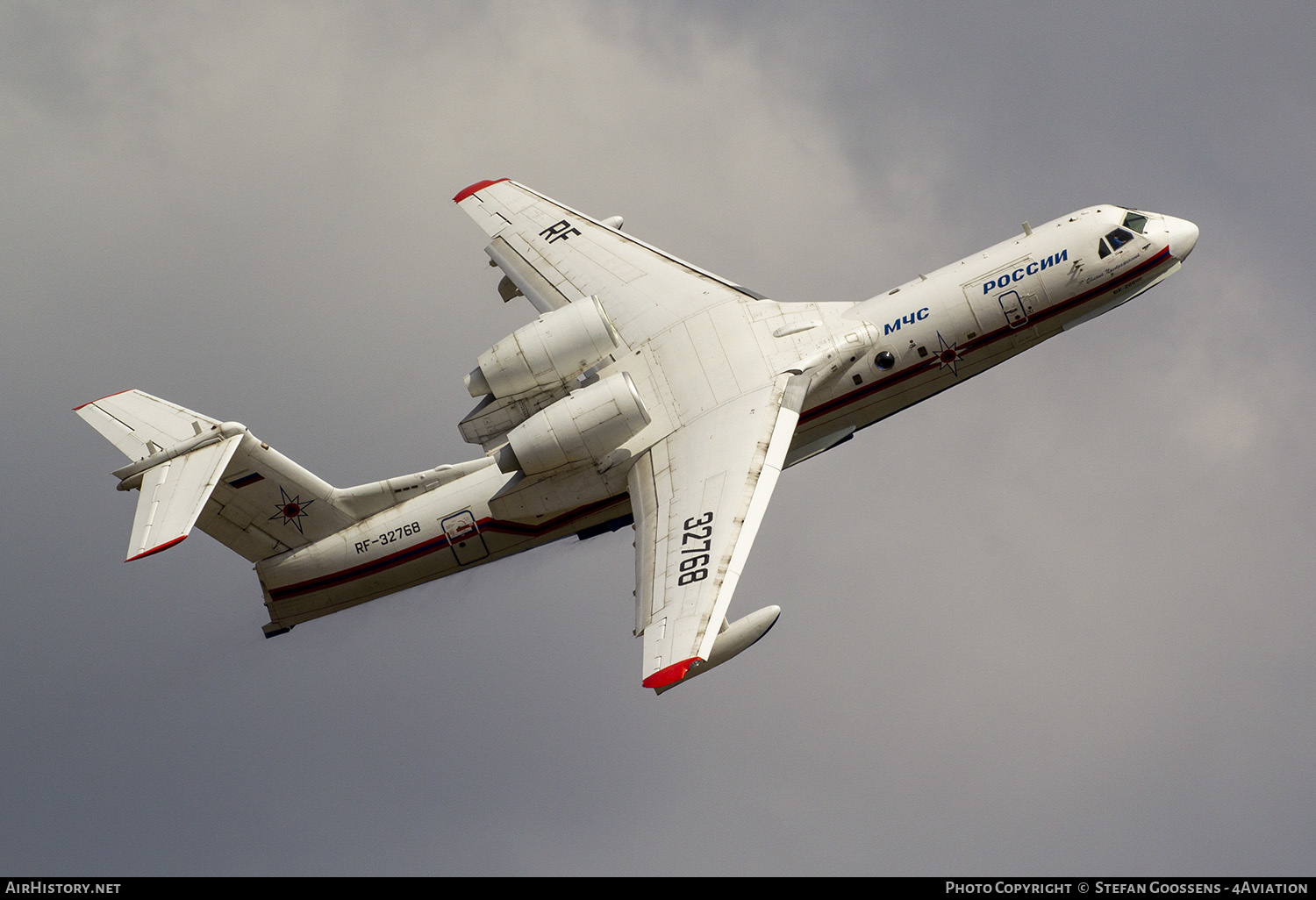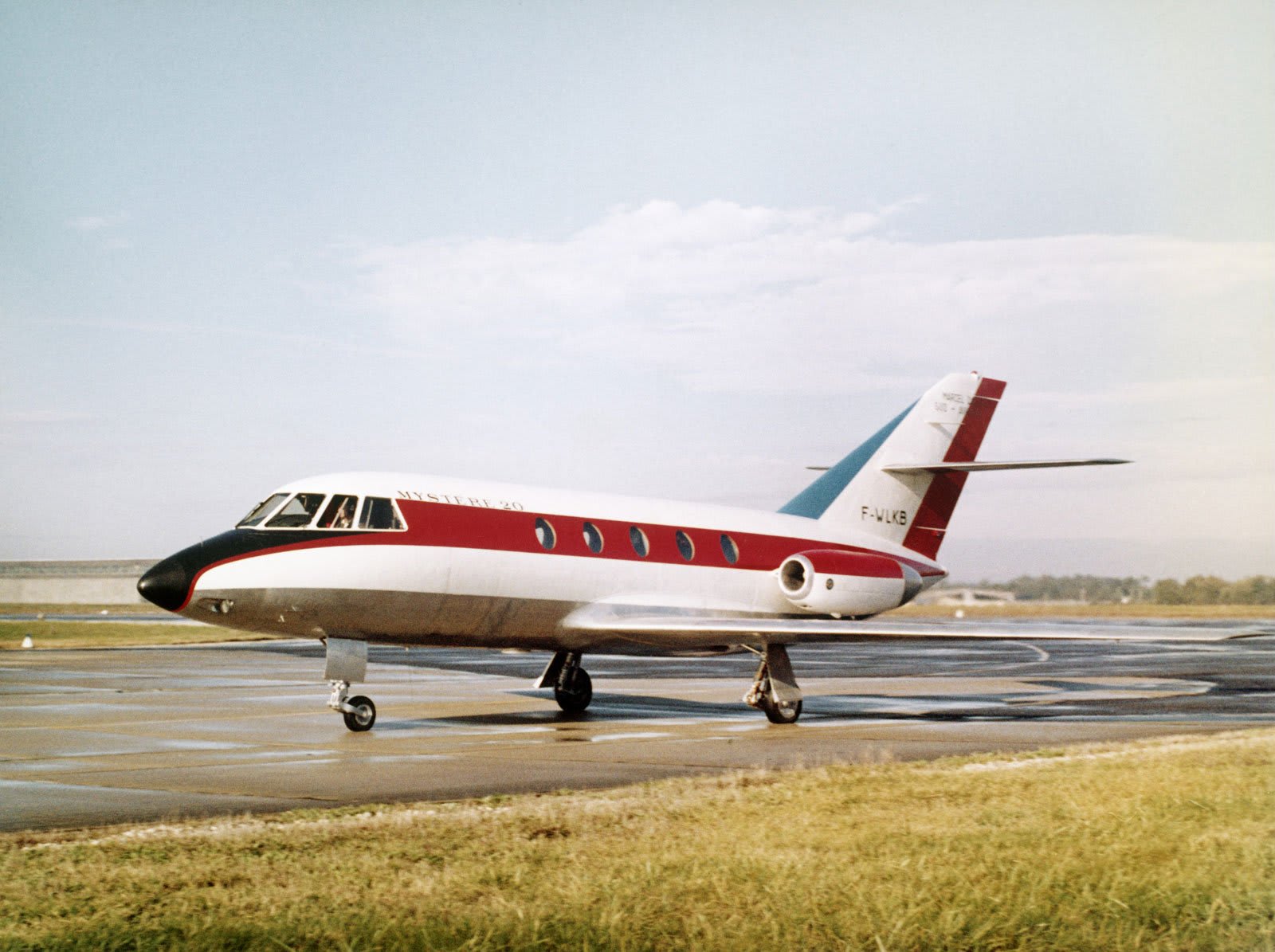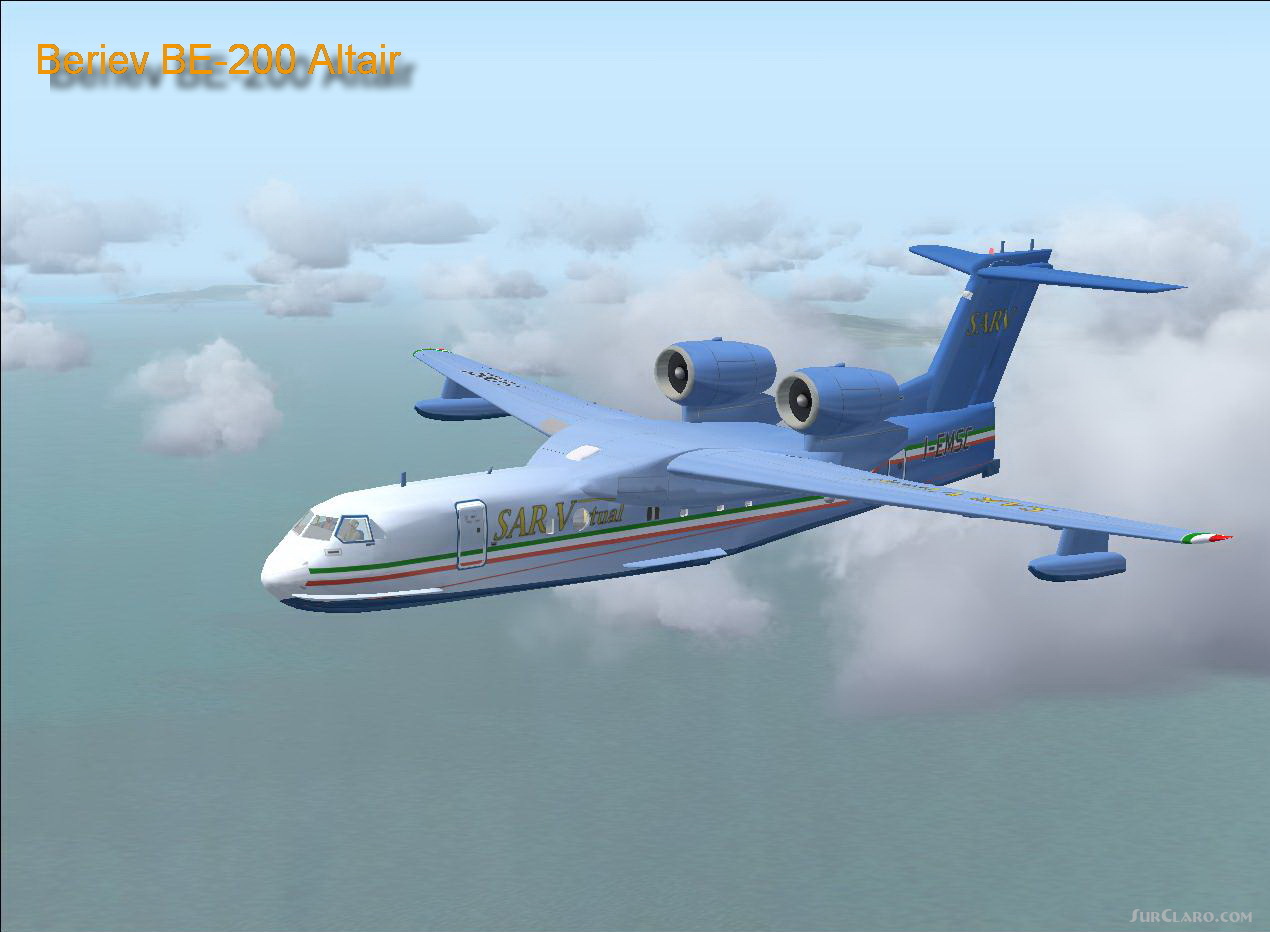Be 200 Aircraft - The Beriev Be-200 Altair (Russian: Бериев Бе-200) is a multipurpose amphibious aircraft designed by the Beriev Aircraft Company and manufactured by Irkut. Marketed as being designed for fire fighting, search and rescue, maritime patrol, cargo, and passenger transportation, it has a capacity of 12 tons (12,000 liters, 3,170 US gallons) of water, or up to 72 passengers.[1]
The first production aircraft, a Be-200ES flew on June 17, 2003. It was delivered to EMERCOM on July 31, 2003. Seven aircraft have been ordered by EMERCOM, five have been delivered. The fifth airframe is being used for the European certification process which was expected to be completed in 2008. EASA eventually certified the Be200ES-E on September 7, 2010. The remaining two are scheduled for delivery by the end of 2008.[1]
Be 200 Aircraft

EMERCOM has an option to buy a further 8 Be-200s, with a decision expected during the latter part of 2008.[11] According to Beriev public data, the basic configuration of the Be-200 amphibious aircraft is intended for fighting forest fires using fire extinguishing fluids.
The Russian Navy Be- Was The First One Ordered By Rf Navy And Crashed During A Firefighting Mission In Southeastern Turkey
While doing this, the aircraft can carry out the following tasks: In April 2008, Azerbaijan became the first foreign customer for the Be-200, purchasing one Be-200ES from Russia. The aircraft (reg. FHN-10201 ex RF-32769) will be operated by the Azerbaijan Ministry of Emergencies and can be operated as a fire-fighting, cargo and 43-seater passenger aircraft.[24]
Initiated in 1989 under the design leadership of Alexander Yavkin, Russian government approval for a purpose-designed water bomber was granted on 8 December 1990. Details of the project were announced, and a model displayed at the 1991 Paris Air Show.[3]
The Be-200 was designed by the Beriev Aviation Company, with the Russian Irkutsk Aircraft Production Association (now part of the Irkut Corporation). Beriev are responsible for development, design and documentation; systems-, static-, flight- and fatigue-testing of prototypes;
certification and support of the production models. Irkut's duties include production preparation; manufacture of tooling; production of four prototypes and production aircraft; and spare parts manufacture.[3] Both companies now fall under the umbrella of the state-owned United Aircraft Corporation.
Secure .gov websites use HTTPS A lock ( LockA locked padlock ) or https:// means you've safely connected to the .gov website. Share sensitive information only on official, secure websites. The Be-200 fire-fighter suppresses fires by dropping water and/or chemical retardants.

Eight ferric aluminum alloy water tanks are located under the cabin floor in the center fuselage section. Four retractable water scoops, two forward and two aft of the fuselage step can be used to scoop a total of 12 tons of water in 14 seconds.
Alternatively, the tanks can be filled from a hydrant or a water tank on the ground. The water tanks can be removed quickly for carrying cargo. Water can be dropped in a single salvo, or in up to eight consecutive drops.
The aircraft also carries six auxiliary tanks for fire-retarding chemical agents, with a total capacity of 1.2 m³. The aircraft can empty its water tanks over the site of a fire in 0.8 to 1.0 seconds when flying above the minimum drop speed of 220 km/h (135 mph, 120 kn)[1]
10 Tanker's Converted DC-10 Hits Wildfire Near St. George, Utah, Through Heavy Smoke. There are plenty of remarkable videos of the air crews from 10 Tanker using their unique, converted DC-10 aerial firefighters to battle […]
For the first time, five Russian Navy Il-38 and Il-38N aircraft have taken part together in an Anti-Submarine Warfare exercise laying sea bottom mines. Russian Navy Il-38 and Il-38N “Dolphin” (NATO reporting name “May”) Anti-Submarine [...]
Irkut and EADS signed a memorandum of understanding in May 2002 to jointly carry out a market study and to define the conditions and costs of international certification and the logistics of setting up a worldwide after-sales service.
The study was completed in July 2003, revealing a potential market for up to 320 aircraft over 20 years. The two companies, with Rolls-Royce Deutschland, plan to obtain Western certification during 2008/9 and offer a Rolls-Royce BR715 powered aircraft for Western markets.[1][3]

This version is to be given the designation Be-200RR. The original Be-200 prototype (RF-21511) has been earmarked to be converted into the Be-200RR prototype.[10] The Be-200's first flight from land was scheduled for 1997, but was eventually achieved by the first prototype aircraft on 24 September 1998.[5]
The aircraft was then transferred from Irkutsk to Taganrog after 26½ flying hours, and the first take off from water was conducted on 10 September 1999 in Taganrog.[6] The second Be-200 flew on August 27, 2002. This aircraft was built as a Be-200ES, being fitted to the specifications of the launch customer, EMERCOM, the Russian Ministry of Emergency Situations.[3][7]
In 2010, production of the Be-200 is due to switch to the Center of competence for amphibian aircraft and flying boats in Taganrog. An assembly line is being set up using tooling and equipment received from Irkut's main manufacturing site in Irkutsk, Siberia.
This will allow the Irkut Corporation to concentrate on other more lucrative projects. Production of the Be-200 will remain under the umbrella of the United Aircraft Corporation.[12] The partnership was renewed in 2005, with Be-200ES (Reg. RF-21512) based in Sardinia between July and September.
The aircraft flew 150 hours covering 63 missions, including ferry flights, and 435 scoops and drops of water, the total mass of which exceeded 3,175 tons (3,500 tons).[15] The first documented operational use of the Be-200 was from 20 August to 30 September 2004. For this period a Be-200ES was operated from Sardinia (Italy) by SOREM, the official operator of fire-fighting equipment of the Italian Civil Defense Department (
Civil Protection). The aircraft, flown by joint Russian-Italian flight crew performed more than 100 flights with about 90 hours flown. During seven hours of operational flights, the aircraft participated in the extinguishing of four forest fires and dropped 324 tons of water.[14]
The footage of a ballistic missile launched from a submarine below the surface of the water is always quite impressive. The Borei-class strategic nuclear submarine Aleksandr Nevsky, successfully launched a Bulava intercontinental ballistic missile from […]

In 2001, as part of a marketing program, the Be-200 was displayed at two large exhibitions in the Pacific Ocean region; the International Maritime and Aerospace Exhibition LIMA'01 in Malaysia and the Korean Aerospace and Defense Exhibition KADE'01 in South Korea.[8]
Beriev developed unique fire-fighting equipment for the Be-200, allowing it to scoop water while skimming the water surface at 90-95% of takeoff speed. This system was developed using a specially modified Be-12P, coded '12 Yellow'. After installation of the fire-fighting system, the aircraft was registered RA-00046 and given the designation Be-12P-200.
This modified Be-12 was used to develop both the fire-fighting system and methods of operation.[4] The Be-200 is a high-wing T-tail monoplane. the hull is of single step design with a high length-to-beam ratio, which contributes to stability and controllability in water.
The Be-200 airframe is constructed of aluminum alloys with corrosion-protection treatments. Selective use is made of titanium, composites and other corrosion-free materials. The wings are fitted with underwing stabilizer floats. The hydraulically operated retractable landing gear units all retract rearward, and each unit is twin-wheeled.
A water rudder provides steering in the water.[13] The multirole Be-200 can be configured as an amphibious water drop fire-fighting aircraft, a freighter, or as a passenger aircraft — the pressurized and air conditioned cabin allowing transportation of up to 72 passengers.
The Be-200 can also be equipped for special missions. When configured as an air ambulance, the aircraft can carry up to 30 stretcher patients and seven seated patients or medical crew. In the search and rescue role, the aircraft can be equipped with searchlights and sensors, an inflatable boat, thermal and optical surveillance systems, and medical equipment.
The search and rescue variant can accommodate up to 45 people. The aircraft is also capable of being configured for anti-submarine warfare duties.[1][13] In October 2006, two Be-200ES (RF-32765 and RF-32768) were leased to Indonesia by EMERCOM, fighting fires[18] for 45 days.[19]

This reportedly cost Indonesia around US$5.2 million.[20] These operations prompted press reports that the Indonesian government had agreed to purchase two Be-200s, each with a projected price of US$40 million.[21] Beriev, however, has not confirmed these reports.
The aircraft is powered by two pylon-mounted D-436TP engines. The D-436TP is a specific "maritime" corrosion-resistant version of the D-436 three shaft turbofan engine, designed especially for the Be-200 amphibian, by Ivchenko Progress ZMKB and manufactured by "Motor Sich" in Ukraine.
These are mounted above the wingroot pods on the landing gear fairings to prevent water spraying into the engines during take-off and landing.[1][13] Such was the success of the first campaign that two Be-200ES were again leased by Portugal from July 10 to September 30, 2007. During this period 58 fire-fighting flights were conducted with a total flying time of over 167 hours.
2,322 tons (2,560 tons) of water were dropped. Beriev claims that representatives of the newly formed Portuguese government enterprise EMA (Empresa de Meios Aéreos) have expressed their interest in a long-term cooperation with Beriev and the Be-200 in Portugal.[22]
In 2006 RF-21512 was leased by the Portuguese Fire Fighting Services (SNBPC – Serviço Nacional de Bombeiros e Protecção Civil) for evaluation during the forest fire season. On 6 July 2006, the Russian crew of the Be-200 leased by Portugal were carrying out a water pick-up from the Aguieira dam near Santa Comba Dão, when on climbing away they clipped treetops and at least one of the Progress D-436TP
engines suffered ingestion damage and had to be shut down. The aircraft recovered safely to land at Monte Realair force base, from which it had been operating. After repairs, the aircraft completed the season in Portugal.
In total, 42 flights were performed during operations in Portugal, with a total flying time of 119 hours. The aircraft performed 301 water scooping operations and dropped 2,167 tons (2,389 tons) of water on fires.[16][17] The aircraft involved in the incident should be RF-88450/20 Yellow "Alexander Mamkin", the first one ordered by the Russian Navy, that participated in the Navy parade last year, where the photos you can find in this article were taken by our

contributor Alex Snow. The squadron is believed to be the Center for Combat Use and Retraining of Flight Personnel of the MA of the Russian Navy, from Yeysk, Russia. "A particular feature of the Be-200 aircraft, when compared with the other amphibians, is that it has a fully pressurized fuselage, which allows it to fulfill a lot of missions.
The aircraft is fitted with flight/navigation and communication equipment allowing the navigation and flight control at all flight phases in adverse weather conditions at any season, day and night. The interior for the Be-200 amphibious aircraft firefighting configuration is developed by AIM Aviation Fliteform.
Passenger and combi configurations are on the list as well. While designing the Be-200 amphibious aircraft, the designers took into account the design experience and test results of the largest jet amphibian A-40 "Albatross" which set 148 records," Beriev website reports.
Footage showing the aircraft operating in a mountainous region before crashing has already started circulating online, even though the first official Russian MOD statement about the incident claimed the Russian amphibious firefighting aircraft crashed "during landing" near Adana, where the aircraft was stationed.
The Digital Flight Control (Fly-by-wire) cockpit is fitted with modern navigation systems such as satellite navigation (GPS), FMS, autopilot and weather radar. The ARIA 200-M all-weather integrated avionics system developed by Honeywell with the Moscow Research Institute of Aircraft Equipment, uses six 152 x 203 mm (6 x 8 in) LCDs to display information to the two-man crew.[13]
Corporate, passenger and utility aircraft. In service since 1974. Exists in many versions. 200T/ 200CT with tip tanks, 200ES with Electronic Flight Instrument System features and 200S/B200S for navigation calibration and maritime patrol. This type has been taken over and is partly built by RAYTHEON, USA.
US-Mil. type: C-12. A Russian Beriev Be-200 aircraft crashed near Kahramanmaras, in southeastern Turkey, during a firefighting mission, to fight a fire that broke out during the day as a result of a lightning strike in the forest area on Aug.
14, 2021. According to the reports, five crew members (military, belonging to the Russian Federation) and three Turkish forest inspectors were killed in the incident (some sources say just 7 people were aboard). In the future, the Russian Navy will operate the Be-200 in the Be-200P variant for anti-submarine warfare but it was initially assigned the firefighting version already operated by EMERCOM, the Ministry of the Russian Federation for Civil Defence, Emergencies and Elimination
of Consequences of Natural Disasters. The name Altair was chosen after a competition among Beriev and Irkut staff in 2002/2003. The name Altair was chosen as it is not only the name of the alpha star in the Eagle constellation, but also because "Al" is the first part of the name of the Beriev A-40 Albatross amphibious aircraft, whose layout was the development basis for
the creation of the Be-200, "ta" stands for Taganrog, and "ir" stands for Irkutsk.[2] Russian Be-200s, including those belonging to EMERCOM, regularly deploy abroad to support foreign nations' firefighting activities. At the beginning of August, the Be-200 deployed to Greece, had flown more than 100 hours in 36 missions, worth 400 water discharges with a total volume of 2,500 tons, in 7 regions of the country, including the islands of Crete and Rhodes
.
be 200 aircraft news, beriev be 200, beriev be 200 for sale, beriev, beriev be 200 cost, beriev be 200 altair, be 200 firefighting plane, cessna 200 series
0 Comments